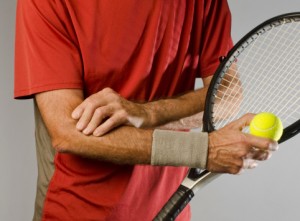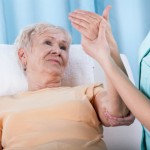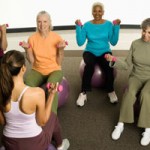

 Tennis elbow, or lateral epicondylitis, is a condition that encompasses the overuse of the forearm, arm and hand muscles, which creates elbow pain. Although it is commonly referred to as tennis elbow, it is not only experienced by tennis players; the term only came about because the condition was quite common among tennis players.
Tennis elbow, or lateral epicondylitis, is a condition that encompasses the overuse of the forearm, arm and hand muscles, which creates elbow pain. Although it is commonly referred to as tennis elbow, it is not only experienced by tennis players; the term only came about because the condition was quite common among tennis players.
The pain experienced with tennis elbow is due to inflamed tendons that join the forearm muscles with the outside of the elbow. Repetitive motions cause damage to these tendons, causing pain in the elbow.
Researchers in Norway have uncovered that frequent tennis elbow can heal on its own without treatments such as steroid injection. A surgeon in New York City, Dr. Joshua Dines, said, “I’m not surprised because that’s really been the classic teaching. The number that’s often cited is that 90 percent of tennis elbow, golfer’s elbow, will get better by the end of the year no matter what you do.”
First author, Dr. Morten Olaussen, added, “It is interesting to note that after one year, as much as one-third of the patients still reported considerable discomfort.” Previous research revealed physical therapy could help treat tennis elbow, but the latest findings found it ineffective which surprised researchers.
Researchers looked at outcomes from 177 Norwegian patients with tennis elbow. Symptoms of tennis elbow were experienced for at least three months. Individuals were put into one of three groups: no treatment except pain relief drugs, physical therapy with steroid injections, and physical therapy with two placebo injections.
Patients were tracked for up to one year, and by the end 157 patients completed the study.
Recovery from tennis elbow was shown to be the same among all three groups. Additionally, physical therapy and steroid injections were linked with worsening conditions at 12 and 26 weeks. Steroid injections were alleviating pain but did not aid in the repair of tendons.
Dines added, “If you get through about six months and haven’t gotten better with some sort of conservative treatment, that’s the group that’s going to go on to need surgery.”
The findings were published in BMC Musculoskeletal Disorders.
 The primary cause of tennis elbow is overuse. When damage is done to specific forearm muscles it can lead to inflammation and pain. Other activities aside from sports can also contribute to overuse of the muscles that affect tennis elbow. Tennis elbow can also result other occupations; plumbers, painters, carpenters, auto worker, cooks, and even butchers all endure repetitive motions, which can increase their risk of tennis elbow.
The primary cause of tennis elbow is overuse. When damage is done to specific forearm muscles it can lead to inflammation and pain. Other activities aside from sports can also contribute to overuse of the muscles that affect tennis elbow. Tennis elbow can also result other occupations; plumbers, painters, carpenters, auto worker, cooks, and even butchers all endure repetitive motions, which can increase their risk of tennis elbow.
Age can lead to weaker tendons as well due to many years of the same repetitive motions. Lastly, sometimes the cause for tennis elbow is unknown, which is called insidious tennis elbow.
If you are unsure whether you have tennis elbow or another condition, look out for these symptoms:
A good way to prevent tennis elbow is by stretching and strengthening the muscles in the forearm. Other tennis elbow prevention tips include:
Effective exercises to strengthen your muscles and prevent tennis elbow include:
 Eccentric exercises: Hold a light weight in your hand and raise your wrist all the way up and all the way down. Alternate with your inner forearm down and then again facing up.
Eccentric exercises: Hold a light weight in your hand and raise your wrist all the way up and all the way down. Alternate with your inner forearm down and then again facing up.
Natural treatments for tennis elbow involve rest, ice, painkillers and a tennis elbow brace. If your arm is overworked – rest it. If it hurts – ice it and use painkillers. And if you have to use it again – use a tennis elbow brace.
Learning proper technique when performing activities is also important for treating tennis elbow and ensuring it does not come back.
Easy ways to lower your risk of falls and injuries
The risk of bone fractures and injury as we age increases as we lose bone density and just aren’t as strong as we once were. Even medications we take can put us at risk of falls by causing dizziness and confusion. No one wants to end up in long-term care because of breaking a hip. Continue reading…
The elderly recover slower from concussions
New research reveals that the elderly take a longer time to recover from a concussion. Concussions are known as mild traumatic brain injuries and account for 75 percent of brain injuries that occur. Working memory may become affected after a concussion, but MRI and CT scans are unable to find abnormalities in the brains of concussion patients. Continue reading…
Copyright © www.orthopaedics.win Bone Health All Rights Reserved